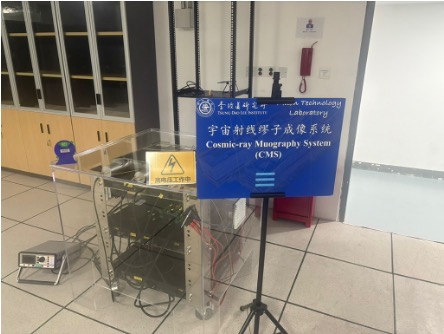The TDLI Muon Physics group developed the Cosmic-ray Muography System (CMS), which has successfully gone online and started data collection in radiography mode. The system features three tracking layers, each constructed using 1.5 cm-wide triangular scintillator bars read out by SiPMs across an active detection area of approximately 50 cm × 50 cm. Integrated with CAEN’s A5202 front-end electronics, the CMS offers a compact, modular, and high-resolution platform for muon imaging.
A series of commissioning measurements were conducted at three locations within TLDI—two inside the Tianwen Hall and one at the B1 underground level. The preliminary results are promising: the cosmic-ray muon flux in the 90° < φ < 180° range at Location #3 (B1) is significantly lower than at the two surface-level sites. This reduction indicates muons passing through denser structural material above the underground site, demonstrating the detector’s sensitivity and confirming its proper operation.
These initial measurements represent a significant milestone in establishing the CMS as the first functional muography instrument in Shanghai, paving the way for future structural, geological, and subsurface imaging studies around the city.


